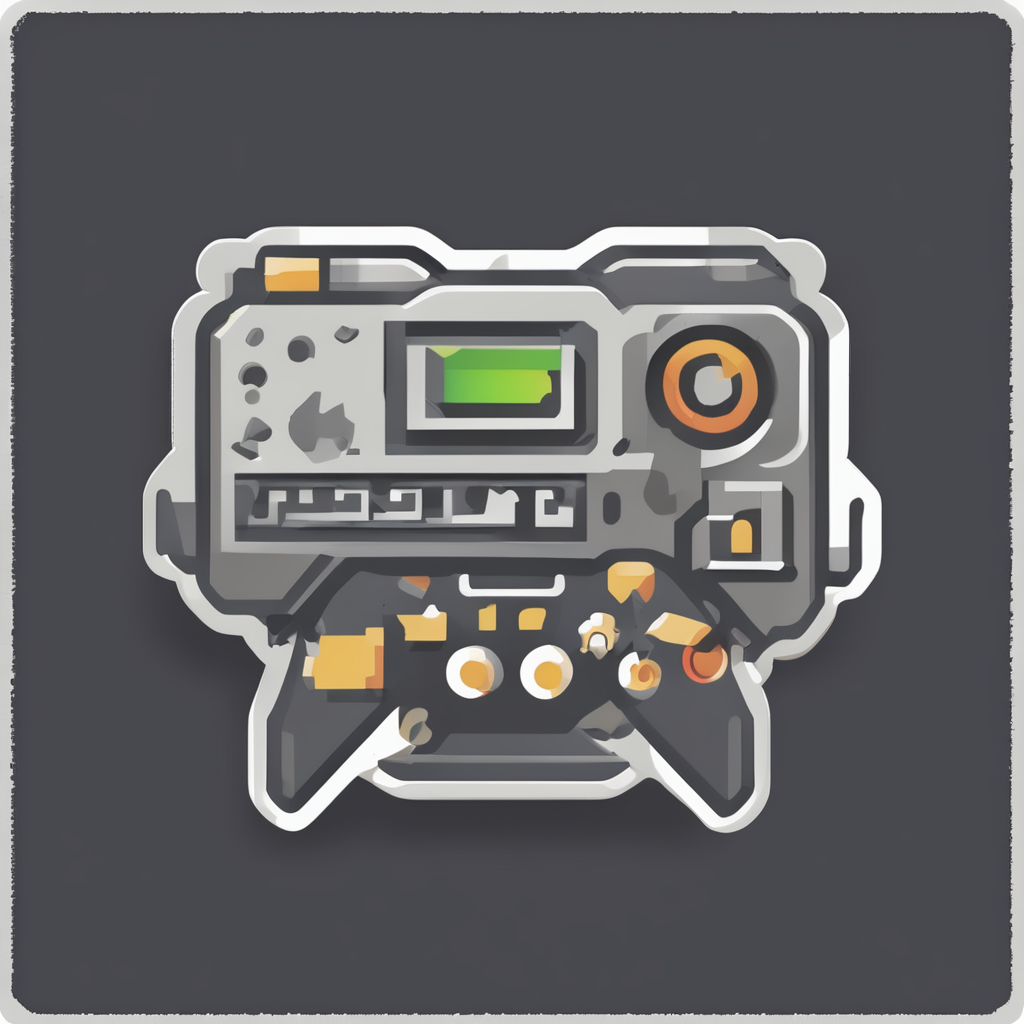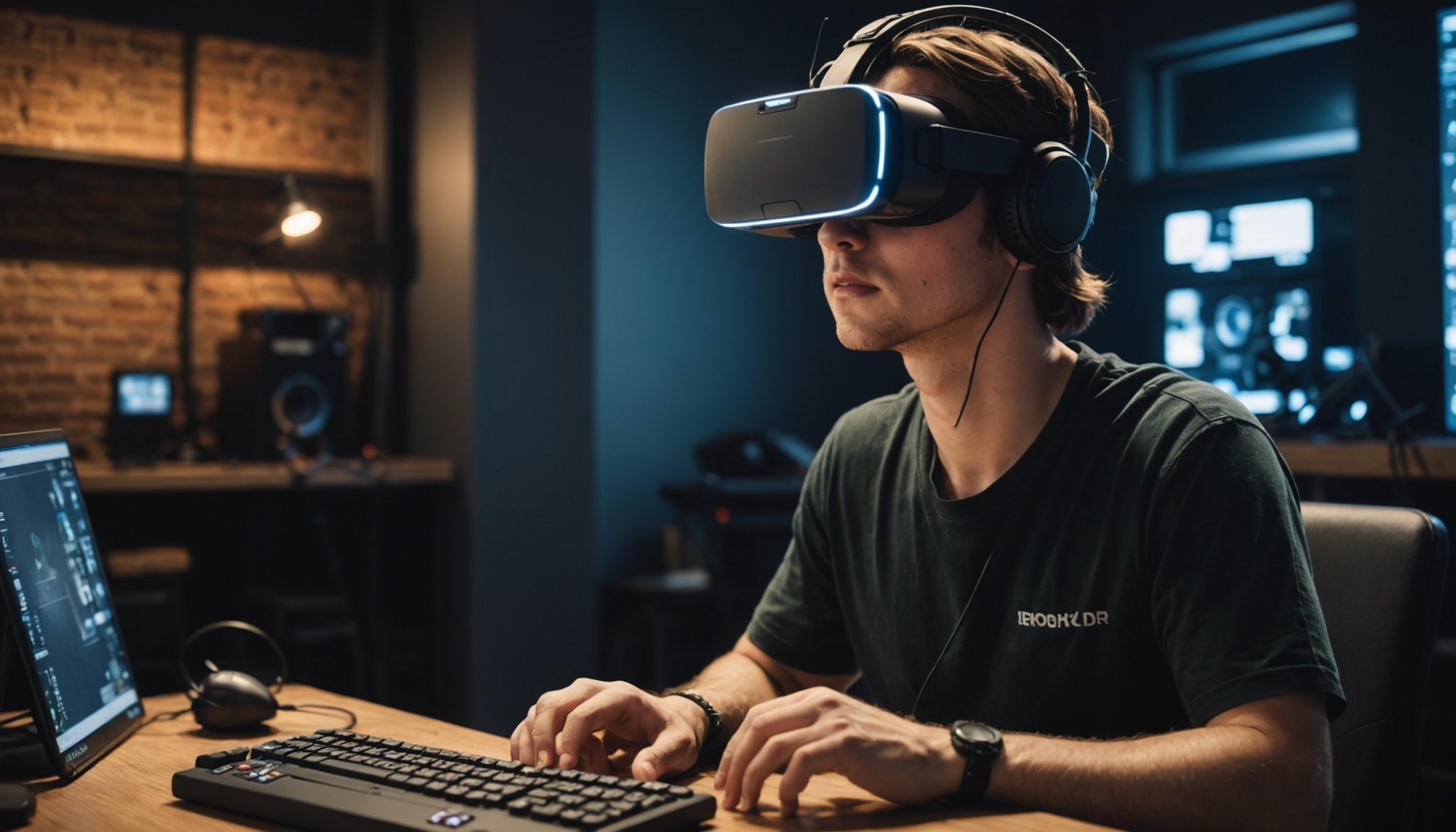Unlocking Accessibility: Harnessing Eye-Tracking Innovations in Virtual Reality Gaming
The Evolution of Virtual Reality Gaming
Virtual reality (VR) gaming has come a long way since its inception, transforming from a niche hobby into a mainstream phenomenon. One of the key drivers of this evolution is the advancement in eye-tracking technology. This innovation is not only enhancing the immersive experience but also making VR more accessible to a wider audience.
How Eye Tracking Enhances Immersion
Eye tracking in VR gaming is more than just a fancy feature; it’s a game-changer. It allows for more natural navigation and interaction within virtual environments. For instance, the HTC Vive Focus Vision, a cutting-edge VR headset, integrates high-quality eye tracking that enables users to control and interact with virtual elements simply by looking at them. This technology makes the experience feel more intuitive and precise, reducing the need for manual controls and enhancing the overall user experience[1].
Topic to read : Mastering Real-Time Language Translation: Top Strategies for Enhancing Communication in Multiplayer Games
Accessibility in Virtual Reality
Accessibility is a crucial aspect of any technology, and VR is no exception. Eye-tracking innovations are playing a significant role in making VR more accessible to users with various needs.
Breaking Down Barriers for Users with Disabilities
For users who may have difficulty using traditional controllers, eye-tracking and hand-tracking technologies can be a lifeline. The Vive Focus Vision, for example, removes the need for physical controllers by allowing users to use their hands as they would in real life. This enhances immersion and reduces the learning curve, making VR experiences more inclusive for users with disabilities[1].
This might interest you : Unleashing procedural innovation: using machine learning to design distinct levels in roguelike games
Practical Applications in Education and Training
Eye-tracking technology is not just limited to gaming; it has profound implications for education and training. In medical training, for instance, the ability to track eye movements and interactions in real-time can provide invaluable insights into how students are engaging with the material. This can help in identifying areas where students may need additional support, thereby enhancing the learning experience.
Here are some ways eye-tracking is improving learning experiences:
- Personalized Learning: Eye-tracking data can help tailor the learning experience to individual students’ needs, ensuring they focus on the most relevant content.
- Real-Time Feedback: Immediate feedback based on eye movements can help students correct their understanding in real-time.
- Enhanced Engagement: Interactive and immersive experiences keep students more engaged, leading to better retention of information.
- Accessibility for All: Students with disabilities can benefit from eye-tracking technology, allowing them to participate fully in educational activities[4].
Technological Advancements in Eye Tracking
The technology behind eye tracking is sophisticated and continuously evolving.
How Eye Tracking Works
Eye-tracking systems typically use infrared LEDs to light up the eyes and IR cameras to capture images of the eyes. An algorithm then detects the orientation and movement of the eyes from these images. For example, the neos device by machineMD uses eye tracking at 200Hz to analyze fast eye movements and pupillary responses, providing detailed insights into eye movements and visual function[2].
Integration with Other Technologies
Eye tracking is often integrated with other advanced technologies to create a more comprehensive VR experience. Neuralink’s brain-computer interface technology, for instance, could potentially combine with eye tracking to create an even more immersive and interactive experience. This fusion could allow users to control virtual objects and navigate digital spaces using both their eyes and their thoughts[5].
Real-World Applications and Examples
Eye-tracking technology is being applied in various real-world scenarios, from gaming to healthcare.
Gaming Industry Innovations
In the gaming industry, eye tracking is being used to create more immersive experiences. The Apple Vision Pro, for instance, uses advanced hand and eye tracking to blend digital content with the physical world, allowing for interactive and adaptable gaming experiences. Games like “Super Fruit Ninja” and “LEGO Builder’s Journey” transform living rooms into interactive playgrounds, providing a level of immersion that was previously unimaginable[4].
Healthcare and Medical Applications
In healthcare, eye-tracking technology is revolutionizing how medical professionals assess and treat patients. The neos device, certified as a Class IIa medical device in the EU, provides a systematic and objective assessment of eye movements, pupillary function, and visual fields. This helps in early diagnosis and monitoring of neurodegenerative diseases such as Parkinson’s and multiple sclerosis[2].
Comparative Analysis of Eye-Tracking VR Headsets
Here is a comparative analysis of some of the leading VR headsets that incorporate eye-tracking technology:
| VR Headset | Eye Tracking | Hand Tracking | Mixed Reality Capability | Price |
|---|---|---|---|---|
| HTC Vive Focus Vision | High-quality eye tracking | Advanced hand tracking | Yes, with video pass-through | $1,000 |
| Apple Vision Pro | Advanced eye and hand tracking | Yes, with dual-chip architecture | Yes, blending digital with physical | TBA |
| Neuralink Integrated VR | Potential for direct brain-eye interface | Potential for neural-controlled interactions | Yes, with holographic displays | TBA |
Future of Eye Tracking in Virtual Reality
The future of eye tracking in VR is promising and filled with possibilities.
Enhanced Sensory Feedback
Neuralink’s integration with VR could enable direct brain-to-VR connections, providing more realistic sensory experiences. Users may feel textures, temperatures, and forces as if they were physically present in the digital world. This could revolutionize the gaming industry by offering haptic feedback that is more sophisticated and nuanced than current VR systems[5].
Advancements in Display Technology
Advancements in display technology, such as holographic displays, are crucial for creating more realistic virtual environments. These displays project 3D images into space, allowing users to view objects from multiple angles without special eyewear. Research teams are continuously improving resolution, viewing angles, and refresh rates to enhance depth perception and realism[5].
Practical Insights and Actionable Advice
For those interested in leveraging eye-tracking technology in VR, here are some practical insights and actionable advice:
- Invest in High-Quality Hardware: Ensure that the VR headset you choose has advanced eye-tracking capabilities. This will significantly enhance the user experience and provide more accurate interactions within virtual environments.
- Explore Mixed Reality Applications: Mixed reality (MR) capabilities can add a new layer of interactivity to your VR experiences. Look for headsets that can seamlessly blend digital content with the real world.
- Consider Accessibility Needs: If you are developing VR content or training programs, consider the accessibility needs of your users. Eye-tracking and hand-tracking technologies can make your content more inclusive.
- Stay Updated with Technological Advancements: The field of VR and eye tracking is rapidly evolving. Stay informed about the latest advancements and how they can be applied to enhance your VR experiences.
Eye-tracking innovations are redefining the landscape of virtual reality gaming and beyond. By enhancing immersion, accessibility, and real-world applications, this technology is opening up new possibilities for users across various sectors. Whether you are a gamer, an educator, or a healthcare professional, the future of VR with eye tracking is certainly something to be excited about.
As Phil Norris, Chief Commercial Officer of machineMD, aptly puts it, “The core technology is a VR headset that provides gamified stimuli to each eye individually, with integrated eye tracking that measures the resulting eye movements and pupillary responses.” This level of precision and innovation is what makes eye-tracking technology a game-changer in the world of virtual reality[2].
In conclusion, the integration of eye-tracking technology into VR is not just about enhancing the gaming experience; it’s about creating a more inclusive, immersive, and interactive world that benefits users in multiple ways. As we continue to push the boundaries of what is possible with VR, one thing is clear: the future is brighter, more immersive, and more accessible than ever before.










